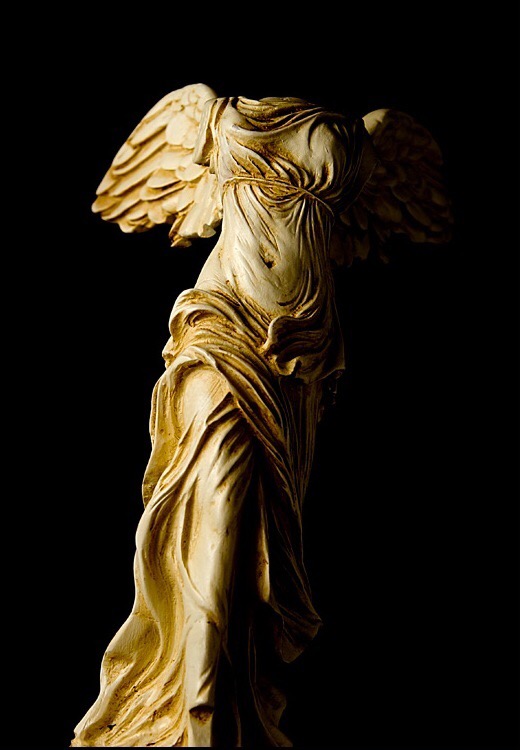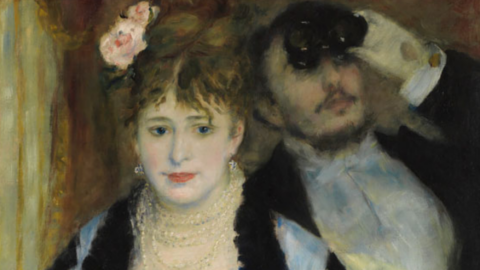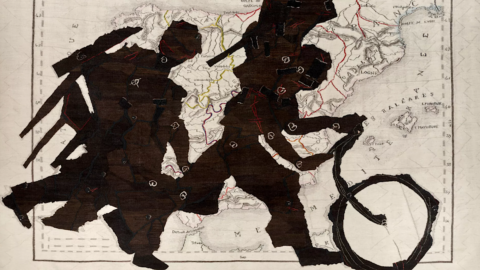His date of birth dates back to May 6, 1791, but first fortress and then royal residence of Charles V. It was Francesco I who transformed it into a palace and his successors enlarged and embellished it. In 1678 it was first opened to the public, after Louis XIV moved to Versailles. At that time there were already 2500 paintings and over 5000 drawings.
During the Revolution, the museum continued to grow richer, as the state took possession of the assets of refugees and religious communities. With the Napoleonic wars, the museum became increasingly filled with treasures, despite the fact that Louis XVIII had to return over a thousand works to their rightful owners (only The wedding of Cana they did not return to Venice, because the canvas was too big, over 10 meters and it would have been risky to send it without incurring the risk of damaging it). Sun King built the Apollo Gallery which then served to bring together the crown jewels, many of which commemorate coronations of the kings of France, such as the “Joyeuse” the sword perhaps belonged to Charlemagne, the scepter of Charles V or the sword that crowned Charles X. But it was Francis I who rearranged all the crown jewels, where the State was only the depositary, but which had the right to pawn them in case difficult times arrived. At the time the treasure included gems and precious items of inestimable value, such as the "Cote de Bretagne” a 105-carat ruby or the “Regent” a brilliant of 140 carats.
Later, during the Second Empire, several private collections were donated to the Museum, such as that of Paul La Caze, which mainly contained masterpieces from the seventeenth and eighteenth centuries. Let's not forget the big one corpus of impressionist works present in the rooms dedicated to the masters of this genre, including numerous Cezanne e Van Gogh donated in the late 40s and early 50s by Paul Gachet, son of the doctor who treated Van Gogh in Auvers-sur-Oise. A man, as they say, who lived in a house without electricity, in complete solitude just to enjoy the paintings he owned. In the 50s the Louvre's reduced budget prevented the purchase of new works, so it was that the Society of Friends of the Louvre, founded in 1897 by a group of wealthy collectors, intervened with providential aid. In 1959, the Society spent a significant amount to purchase Mme Guillaume Walter's collection of paintings.
Today the Louvre, with approximately 70 m² of exhibition space, has over 380 objects and works of art, collections of Middle Eastern archeology, Egyptian, Greek, Etruscan, Roman and Islamic art collections. But also sculptures from different eras, decorative arts, and as many as 12 paintings and 183 drawings and prints. Most of the objects in the Asian and Egyptian sections come from archaeological campaigns. It was one of the conservators of the Louvre, André Parrot, who discovered the ancient Sumerian city of Mari, which existed 3 thousand years BC. From here, the Stele of the Vulture, which commemorates the victory of a Sumerian king, the statue of Governor of Mari and Code of Hammurabi which with the frieze of archers from Susa, represent some of the most precious relics of the ancient civilizations of the Middle East in the Louvre.
But it is the painting collections that attract visitors. Together with Gioconda, the most admired paintings just to name a few… are: theCoronation of the Virgin of the Fra Angelico, Our Lady of the Chancellor rollin di Van Eych, Lace maker by Vermeer, the Bathsheba of Rembrandt, the Ihonor by David, followed by an infinite number of masterpieces.

We often wonder what is the value of the Louvre collection or how does the museum defend itself from thieves? Just to remind, after the theft of the Mona Lisa happened in 1911, the museum adopted drastic security measures, but this did not prevent, it was June 11, 1939, an exalted man, a certain Stanislas Bogouslavky, from stealing Watteau's indifferent, which however he returned a few months later. A theft today would be almost impossible, the Louvre is practically a fortress.
And finally to complete the entire architectural work, after the Carousel of the Louvre, a real underground city with shops, bars, services, auditoriums, a large bookshop and a hall for temporary exhibitions, today we also have Inverse pyramid which illuminates the largest museum in France.





